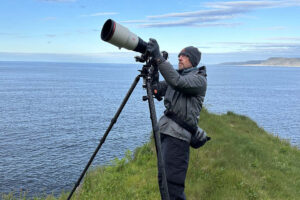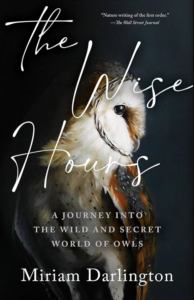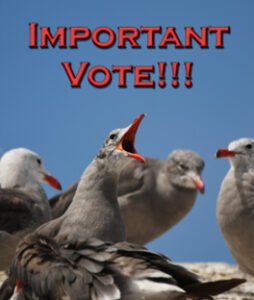Sphyrapicus ruber
Order: Piciformes
Family: Picidae
By Sharon L. Moore
It’s mid-May in a local, protected riparian habitat when we suddenly see a flash of red overhead followed by a quick landing at the edge of a small hole in a dead snag above us. The bird shimmies through the opening and disappears. “Wow, a Red-breasted Sapsucker,” we whisper, waiting with binoculars poised to catch another glimpse. But the bird fails to reappear. What is it doing in the snag? We wonder. Is it still hollowing out its cavity or incubating its eggs or even perhaps feeding its new hatchlings? Though we have no immediate answers we agree to learn more about this colorful woodpecker so that at our next sighting we’ll be better able to observe and understand its behavior.
Unique to the western U.S. and Canada, Red-breasted Sapsuckers prefer coniferous forests of cedar, hemlock and spruce; however, they’re also attracted to deciduous and riparian habitats with large cottonwood trees. During breeding season they generally nest in dead snags where they can drill the nesting cavities they need for raising their young. In winter they may frequent mixed forest habitats including urban parks, small woodlots, even backyards. With our relatively temperate climate in the Pacific Northwest, these birds are the least migratory of all western sapsucker species and the only ones we regularly see in Washington in the winter. If the weather turns too cold sapsuckers living inland in the coastal mountain ranges may descend into the lowlands or move out to the Pacific coast to find food. Coastal sapsuckers may even remain there as permanent residents throughout the year. With extreme cold locally in the winter, small numbers of sapsuckers may migrate to Northern California, Nevada, possibly even to Mexico in search of better foraging opportunities.
Distinguishing this bird from other woodpeckers is fairly easy. The brightly colored Red-breasted Sapsucker is close to the size of an American Robin, 8 to 8.5 inches in length, with a 14.5 to 16 inch wingspan. The head and breast are bright red on both the male and female as are the large vertical white stripes usually visible on the folded wings. Juveniles’ feathers are dusty brown with darker brown-black backs. You may hear the adults communicating with a series of cheer calls or a weep weep call. Like all woodpecker species, they also drum with their bills in short bursts followed by irregular beats, sounding like tatatat tatat tatat. All sapsuckers are quiet in winter.
This sapsucker feeds on tree sap, hence its common name. It also eats berries, insects and bits of tree cambium. Using its tail as a brace while it clings to a tree with its four-toed claws, it quietly drills evenly-spaced small holes in live tree bark, returning often to these holes to lick up the sap and feed on insects, especially ants, which are also attracted to the sap. The stiff hairs on its tongue facilitate collecting the sap. A point of interest is that Rufous Hummingbirds may also drink this sap for nourishment as they migrate north in early spring. The Red-breasted Sapsuckers also forage for insects by gleaning and probing into the bark of tree trunks. When sapsuckers drill in healthy trees they may occasionally kill a tree, though this is rare. Should you have such a damaged tree on your property, the best recommended control is to wrap burlap around the affected area of the trunk. Hanging bright, shiny objects near the damage will also deter the birds. The Federal Migratory Bird Treaty Act of 1918 protects all woodpecker species. It’s therefore illegal to harm them in any way.
Red-breasted Sapsuckers are cavity nesters that breed in April and May. These monogamous pairs excavate a number of nest holes in a carefully chosen dead, deciduous tree. Then, based on unknown criteria, they choose one cavity in which to raise their family. The nest hole is exactly the needed diameter for the adults to enter and exit, disallowing many predators from access. The nest cavity may be 50 to 60 feet or higher above the ground. Both sexes excavate and may use the same tree in subsequent years but never the same cavity. There is no lining in the nest cavity. These birds are extremely territorial in defending their nest sites with males observed locking bills with interlopers and falling to the ground fighting. The female lays four to seven white eggs that are .8 to 1 inch long and .6 to .8 inches wide. Both the female and male incubate the eggs for 11 to 15 days with the male generally being on the job through the night. The nestlings are born naked and helpless and remain in the nest cavity for 23 to 28 days after hatching.
During this time the parents show intense parental care throughout the development of their young that are fed every seven minutes during their first six days of life. The parents bring spiders, caterpillars and flies to the nestlings. They also remove the gelatinous mucous fecal sacs the young produce as they defecate. This keeps the nest clean and protects the young from disease. After six days berries and sap are introduced to the hatchlings in addition to the insects. Raising the chicks is such hard work that the adults may need help from other Red-breasted Sapsucker adults without hatchlings who step up to feed the young in a neighboring nest. As the young grow, the parents begin to teach them to fly at higher altitudes and also to suck the sap they need for nourishment. Even after the young leave the nest at between three and four weeks old, the parents continue to feed them for about ten more days. Generally, these amazing parents raise one brood a year though if the first brood fails they may try again.
As to the future of the Red-breasted Sapsucker species, the question of whether their population is stable is difficult to answer. As David Allen Sibley states in his highly regarded book The Sibley Guide to Bird Life and Behavior, pg. 382, “Since woodpeckers are habitat specialists they are at risk if their habitat is threatened. Most woodpecker species are too poorly studied for scientists to know whether their populations are increasing or decreasing.” The Audubon Society states populations of Red-breasted Sapsuckers have probably declined somewhat owing to cutting of forests in the Northwest but populations are still fairly numerous. Whether that is actually the case we are unable to verify without sufficient data. Even lacking scientific evidence, however, those of us who observe and care about birds are noticing that problems are increasing for them. The ongoing loss of habitat coupled with increased global warming is most likely affecting the survival risk for many avian species including the Red-breasted Sapsucker.








